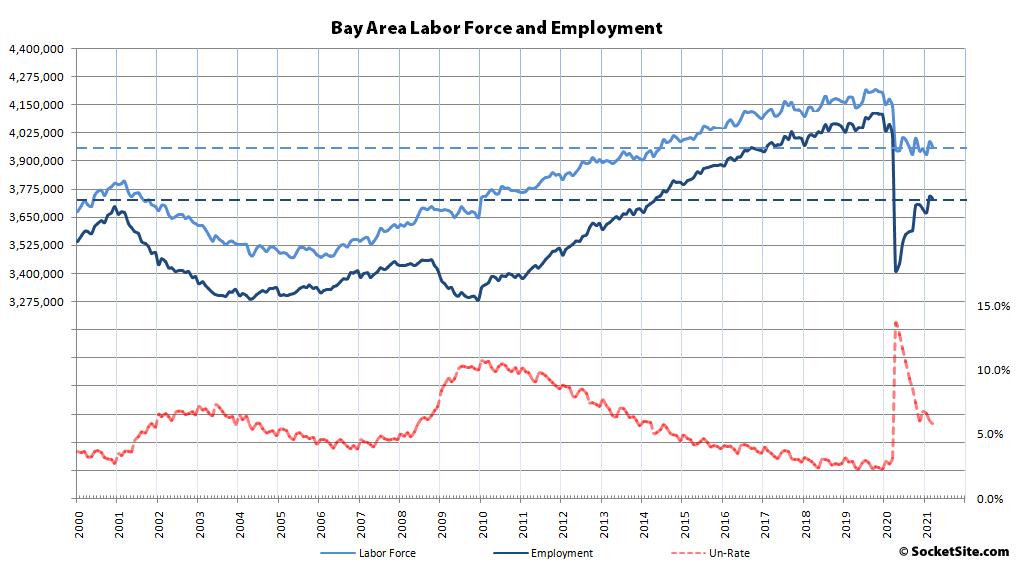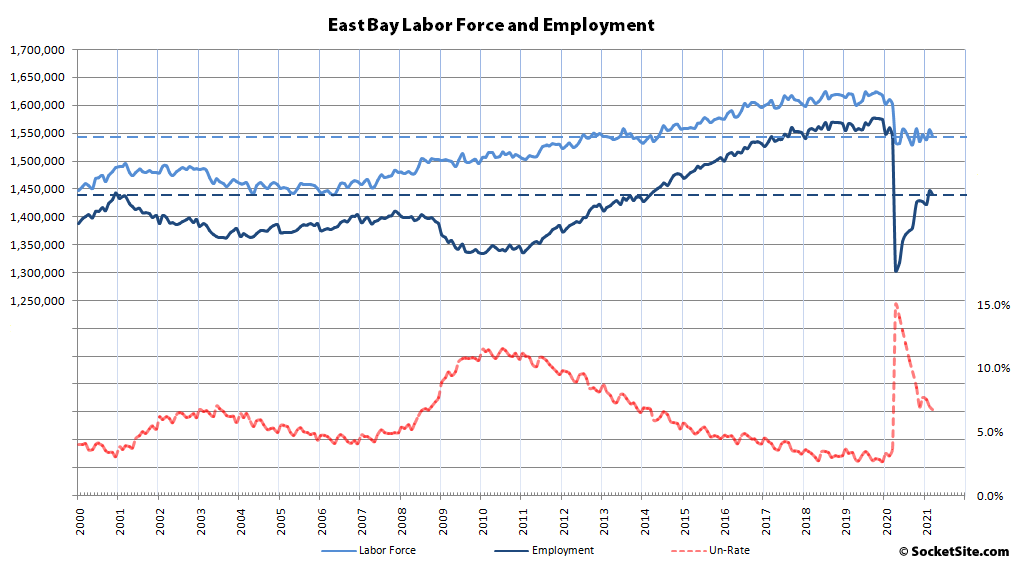With the State’s Stay Home Order having been lifted in January, and local restrictions on indoor dining, gyms, museums and other indoor attractions having been relaxed in early March, the number of people living in San Francisco with a paycheck inched up by 300 in March to 513,100.
And while there are now 34,400 more employed residents in San Francisco than there were at the height of the pandemic, there are still 49,400 fewer than there were at the same time last year, with 36,700 fewer people in the labor force (542,500), for an unemployment rate of 5.4 percent (versus 2.8 percent at the same time last year).
At the same time, while the unemployment rate across the East Bay has inched down to 6.7 percent, the number of employed residents actually slipped by 7,100 to 1,439,200 last month, which is 135,500 more than at the height of the pandemic but still 102,000 fewer than at the same time last year, with 57,000 fewer people in the labor force.
Employment inched up by 400 in San Mateo but slipped by 3,800 in Santa Clara last month. And as such, while there are now 104,400 more people employed in the Valley (1,366,200) than there were at the height of pandemic, there are still 92,400 fewer than there were at the same time last year, with 62,200 fewer people in the labor force (1,439,200) and an average unemployment rate of 5.1 percent.
A total of 48,600 jobs have been recovered across Marin, Napa and Sonoma since last April, but the number of employed North Bay residents is still down by 32,200 on a year-over-year basis, with 25,700 fewer people in the combined labor force (440,700) for an average unemployment rate of 5.7 percent.
And as such, while there were 322,900 more Bay Area residents with a paycheck at the end of last month (3,734,100) than there were at the height of the pandemic, there are still 276,500 fewer than at the same time last year with 177,900 fewer people in the labor force, for a combined unemployment rate of 5.8 percent.


